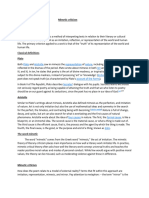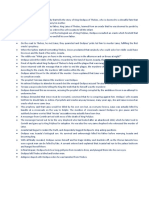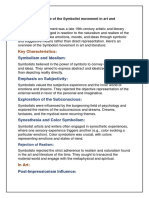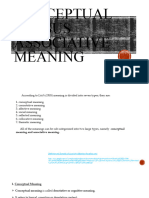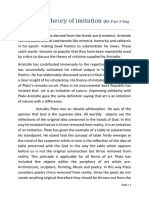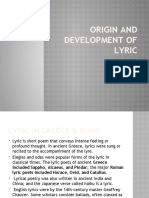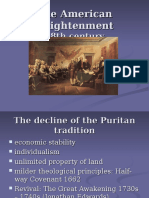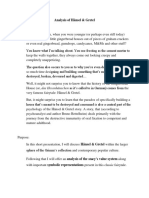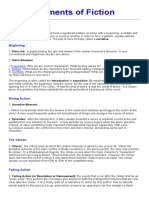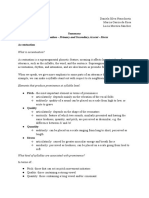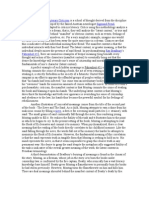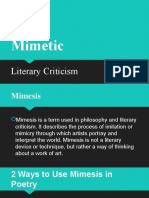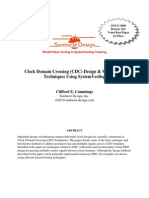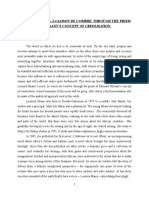Mimesis – is a term used in philosophy and literary criticism.
It describes the process of imitation or
mimicry through which artists portray and interpret the world.
What is the theory of mimesis?
As stated by Patrcik Gleeson, “The mimetic theory of literary criticism places primary importance on how
well a literary work imitates life”
Mimetic theory looks into how well a piece deliver a universal truth to its readers to emulate the moral
values that incorporated in every piece.
The theory also looks into how realistic the piece is since it argues that literary pieces are a lens of life.
Plato’s view
He saw poetry, along with other mimetic forms such as theatre, as a representation of nature that was
inherently inferior to the original
He used the example of a bed, saying that although a poet might describe a bed in detail, they don’t have
the knowledge of carpentry that the craftsperson used to make the actual bed. Therefore, they can’t hope
to capture the truth of the bed.
An artist’s copy of an object can only ever capture a small part of the thing as it really is.
He believed that mimesis was the furthest one could get from the world of ideas, his take on what he
considers the “real”, it is twice removed from reality.
Aristotle’s view
He argues that it is a natural human impulse to make art that imitates the people, places, and events,
around them.
According to him, mimesis still creates a work of art removed from reality, but that gap is a good thing
because the audience responds best to a combination of recognition and distance. He believed that
mimesis was an attempt to come closer to the truth of something, the “real,” as it were.
The Aristotelian concept of mimesis involved not just imitation but addition. – the poet adds symbolism
and structure that lets their audience draws meaning from the work.
Purpose
The primary focus of mimetic criticism/analysis is to show that there is a part of reality that is seen from
the person who wrote the literature. (He is depicting something with his own additions, still depicting the
object which he mimics.)
In practice, mimetic critical theory often asks how well a literary work imitates life.
Under this theory, mimesis would describe how these observable objects or subjects would be closely
imitated/represented in the literary work.
�Plato: says mimesis is not ideal because it only give us a glimps, or a piece of the whole experience rather
than a concrete object that one could only experience. It encourages the weaker part of the soul and numb
the faculty of reason, in short it decreases or it is deductive to rationality. From an educational standpoint.
Aristotle’s objection: it is a natural pleasure in imitation that enables the child to learn his earliest lessons
in speech and conduct from those around him because there is that curiosity and pleasure in
Poetry is mimetic in nature, it will not be an exact representation of reality. Poetry includes philosophy.
